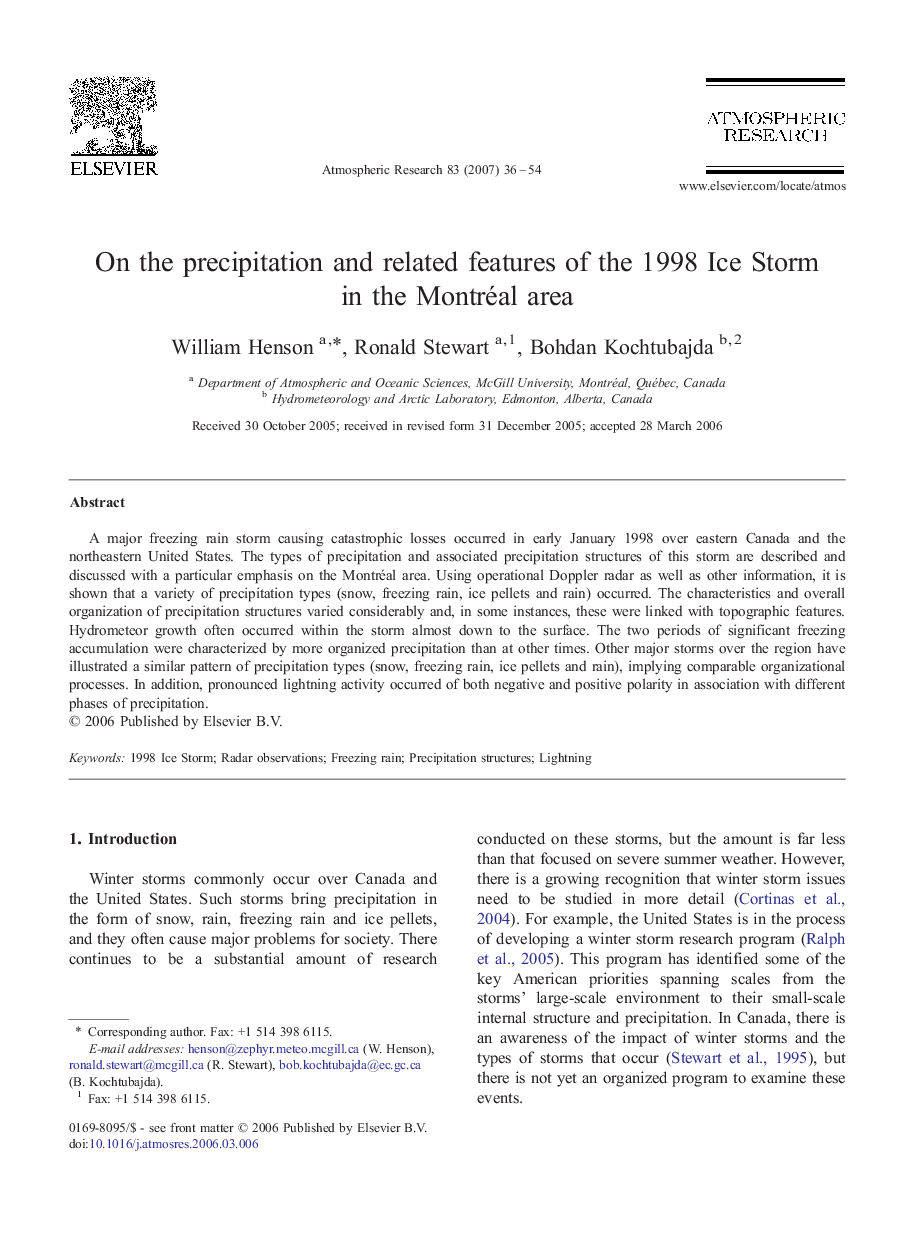| Article ID | Journal | Published Year | Pages | File Type |
|---|---|---|---|---|
| 4451455 | Atmospheric Research | 2007 | 19 Pages |
A major freezing rain storm causing catastrophic losses occurred in early January 1998 over eastern Canada and the northeastern United States. The types of precipitation and associated precipitation structures of this storm are described and discussed with a particular emphasis on the Montréal area. Using operational Doppler radar as well as other information, it is shown that a variety of precipitation types (snow, freezing rain, ice pellets and rain) occurred. The characteristics and overall organization of precipitation structures varied considerably and, in some instances, these were linked with topographic features. Hydrometeor growth often occurred within the storm almost down to the surface. The two periods of significant freezing accumulation were characterized by more organized precipitation than at other times. Other major storms over the region have illustrated a similar pattern of precipitation types (snow, freezing rain, ice pellets and rain), implying comparable organizational processes. In addition, pronounced lightning activity occurred of both negative and positive polarity in association with different phases of precipitation.
